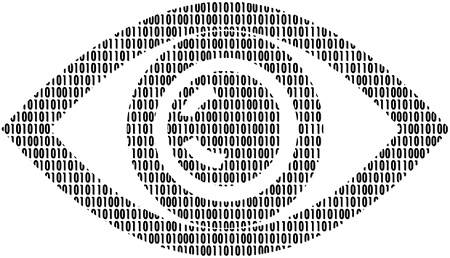What does the audiovisual designer become when every piece of equipment needs only power and an ethernet connection? Our industry has been ruminating for a decade about the collision of AV and IT and we’re still waiting to find out what happens. If you examine what lasting skills are needed when AV systems collapse into a bunch of network devices, you see there is still plenty to be done to practice and enhance our abilities to design for the human senses.
I see audiovisual designers as interface designers, but not just for GUIs. I mean that they are designers of the interface between buildings and the human senses of sight and sound. Audiovisual designers, as the name suggests, are looked upon as the owners of the audio and visual experience. We shape environments so that people can hear, see, and communicate with others. We enable people to present and exchange ideas and information both locally and from a distance. We make spaces that enable and enhance human interaction.
The “internet of things” is expanding rapidly. Today the things in my home (laboratory) that are connected to the internet are many: my phone, my tablet, my car, my thermostat, my media delivery systems, including all of the TVs and audio devices, my pedometer, my weight scale, the electrical panel on my house, my guitar pedals, my lights, and my security system. Oh, and my computers. The traditional AV infrastructure is vanishing before our eyes and much of the traditional scope of the AV designer will vanish with it. But you already knew that.
In the future what will remain important is our knowledge about how people see and hear, and more importantly, perceive and interact. Some of us may need to evolve from electrical and network engineers into experts in the disciplines of visual and aural perception, cognitive psychology, graphic design, and human-machine interaction. Obviously the “internet of things” will still require a network (or “plumbing” as I refer to it), but as the transportation of audio and video signals over ethernet eventually gets sorted with technologies like AVB, fewer traditional audio or video hardware engineering skills will be needed. What will remain of our traditional scope of work is the need to know the following:

Acoustical Design—How many audio transducers (microphones and loudspeakers) are needed, where is the best place to put them, and how can the space in which they are installed be designed to support clarity and intelligibility? This involves a thorough knowledge of how we hear and how the brain perceives sound in all types of spaces.
Visual Design—Visual elements include image displays, but may expand to general artificial lighting as the lines between these two elements blur. As they do today, designers will guide users on quantity and size of displays and determine the best places to integrate them into a building, but as displays become ubiquitous and built into every surface, we may also need to evolve into content designers. What font is best read from a distance and what size text is optimal? What type of graphic design clearly supports the message? As the people responsible for communications, our jobs should expand beyond just displays, but also to guide how best to use the tools we provide.
Interactivity Design— What methods should be used to interact with these systems? Voice, tactile, gesture, and automation based on location, climate, social data, building status, emergency events, etc., will need to be considered to allow people to control and interact with these systems. How will we design interactions that are understandable, familiar, and simple?
Architects have been “interface” designers from the beginning of the built environment. They are the experts and inventors of spaces in which people live, interact, think, and work. The skills needed to create effective interactive environments are more similar to that of an architect than they are to a network engineer. I’m not talking about the “art” side of architecture, but the more empirical side of design practice. The audiovisual designer is a person who understands the limitations of humans, the potential of technology, and has the ability to create a beautiful interface between the two to enable higher forms of human interaction.
Paul Chavez (pchavez@harman.com) is the director of systems applications for Harman Pro Group. He is a usability evangelist and a futurologist. Chavez has designed a variety of audiovisual systems ranging from themed attractions to super yachts. He has also taught and written on the topics of interaction design, audiovisual design, and networking.
Resources for Designers
Acoustics
M. David Egan has written some of the best reference books for the architectural industry, including Architectural Acoustics. This book covers a lot of ground in an easy to understand format with a liberal use of illustrations. There are a lot of theoretical acoustics books out there, but this one is great for understanding applied acoustics in the architectural environment.
There is also a new online course over at Synergetic Audio Concepts that covers sound reinforcement for designers. Pat Brown is one of the best in our business at making complex topics understandable. You can take this and other audio related courses at www.synaudcon.com.
Visual Design
The Architecture of Light by Sage Russell is a well-illustrated manual on lighting design. Although it is primarily written for architects, the fundamentals and design sections of the book apply well to media spaces where light can make or break a visual display implementation.
The Visual Display of Quantitative Information by Edward Tuffe is the first of a series of fundamental books on quantitative graphics design. Although today there are many great books about information design, most of them are built on the shoulders of Tuffe’s writings.
Interactivity Design
I can’t really talk about interaction design without mentioning The Design of Everyday Things by Donald Norman. This foundational text teaches us about how the brain interacts with the world. It focuses on the human cognitive limitations that you need to keep in mind when designing anything including AV systems.
The online education site Coursera.org has a Stanford University course on Human- Computer Interaction taught by Scott Klemmer that is free. You can either take the course on the official schedule, or you can watch the videos and take the quizzes on your own time.
When it comes to thinking about the future of design, science fiction writer and futurist Bruce Sterling has written about the way we will interact with things in the future. His little book, Shaping Things, defines a new form of product he calls a “Spime,” which predicts the nature of the evolving internet of things.
—P.C.
